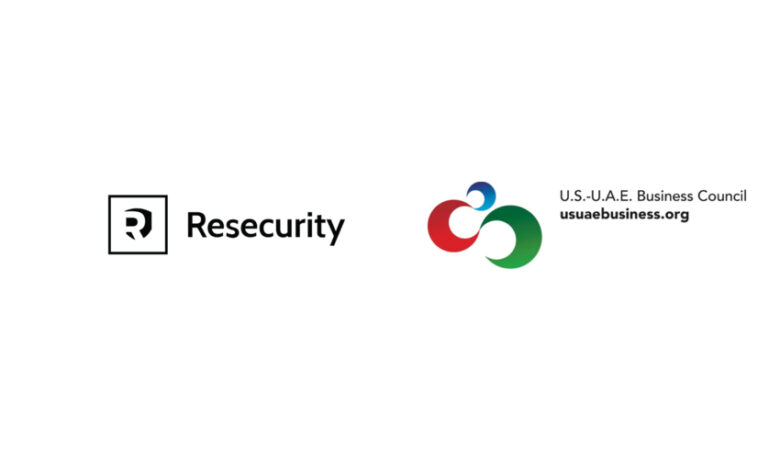30 Free Ideas For Choosing A UAE Cyber Security Service
Wiki Article
Top 10 Tips To Evaluate The Certifications And Compliant Of A Cybersecurity Services Company In Dubai, Uae
1. Verify the authenticity of certificationsBegin by confirming that the certificates issued by the business are valid. Check that the certificates are valid and current by contacting the authority issuing them or the body that certifies them. Important certifications to take into consideration include ISO 27001, PCI DSS and copyright and many more. The valid certifications demonstrate compliance to security standards.
2. Learn more about Local Regulatory Compliance
Learn about the local laws and regulations governing cybersecurity in the UAE including the UAE Data Protection Law and the Dubai Cybersecurity Strategy. Be sure the company is adhering to all legal frameworks. In the absence of compliance, you could result in legal consequences as well as reputational damage.
3. Examine Industry Specific Standards
Depending on the field you work in, specific standards might be more relevant. For example healthcare and financial institutions organizations should be focusing on PCI DSS. Through evaluating certifications specific to the industry and ensuring that your company is equipped to manage specific risks for the sector.
4. Request Documentation
Get all the documentation you need to prove the compliance with applicable standards. Audit reports, security policies and risk-management guidelines are all provided. A thorough documentation can offer an insight into the firm's dedication to compliance as well as the effectiveness of its cybersecurity policies.
5. Request Information About Third-Party Auditors
Ask the company if they have regular audits performed by a third external third. Independent audits can offer an objective analysis of the compliance status and security posture. Check for audit reports from reputable firms that validate the company's security practices.
6. Evaluate Continuous Improvement Initiatives
The field of cybersecurity is constantly evolving and businesses must show a commitment to continuous improvement. Check if the company updates its policies and technology to keep up with new threats and new rules and regulations. This may require ongoing security updates and ongoing training.
7. Review Employee Training Programs
A well-trained workforce will help to create a strong cybersecurity framework. Ask about the company's compliance and cybersecurity training programs. Regular training sessions will ensure that employees are aware of the most recent threats and compliance requirements.
8. Review Incident Response Plans
Learn the procedures of your company to handle incidents. A solid incident response plan will define the company's data breach notification procedure, remediation strategies and other aspects. It is important to ensure that the procedures adhere to compliance requirements and industry-standard practices.
9. Look for reviews and testimonials from clients.
You can ask for references from existing clients to confirm the compliance of the company and certifications. Testimonials give insight into a company's capability to manage cybersecurity threats, and help you assess its reputation.
10. Research Industry Recognition
Check out the reputation of the company in the cybersecurity community. Check for awards, accolades, or memberships in professional associations that demonstrate their commitment to compliance and cybersecurity excellence. Strong reputations are often correlated with trustworthiness and experience. Follow the top Cyber security services for more advice including secure it company, ai cybersecurity, network security systems, cyber security info, cyber security what is, cyber security in companies, security by design, inform security, ot cyber security, cybersecurity for iot and more.

Top 10 Ways To Determine The Capabilities Of Incident Response At The Cybersecurity Service Company
1. Learn about the incident response structure that your company has in the place. A clearly defined structure, like the NIST Cybersecurity Framework of the SANS Incident Response Process shows that the company adheres to best industry practices for managing incident effectively. Be sure that the company is able to follow a well-defined approach to incident management.
2. Evaluate Incident Response Team Expertise
Check out the credentials and experience of the participants. Examine for certifications, such as Certified Incident Handlers (GCIH) and copyright Security Professionals (copyright). It is crucial to ensure that your team is knowledgeable and has experience to handle and reduce incidents.
View past Incident Response Case Study Examples
Get case studies and examples of incidents the business has managed previously. Analyzing how they respond to actual scenarios can provide insights into their efficiency as well as their speed and general approach to handling incidents. Discover in detail the methods they used to identify, contain, or resolved incidents.
4. Make sure you have a 24-hour emergency response
If your company offers 24/7 emergency response to incidents You should inquire. A cyber-attack can happen anytime. The presence of a staff available 24/7 will ensure that any threats are handled quickly and reduce damages and recovery time.
5. Contact Us for Information on Incident Detection Systems
Review the tools utilized to detect and monitor incidents. Effective detection software, such one like a Security Information and Event Management system (SIEM), and an intrusion detection system (IDS), is essential to identify threats as fast and efficiently as possible.
6. Examine Communication Protocols
Examine the protocols for communication that the company implements in the event of an incident. Effective communication is crucial for coordination of responses, informing stakeholder and ensuring everyone is aware their roles during an event. Being aware of how they inform customers throughout the response is important.
7. Review Post Incident Review Procedures
Find out about the review process for your company following an incident. After an incident, thorough reviews can assist in identifying areas of improvement and lessons learned. Seek out companies that have implemented adjustments based on the reviews to enhance their response strategies in the future.
8. Assess Recovery and Remediation Strategies
Learn the strategies used by companies to restore data and systems after an event. Effective recovery plans detail the methods by which information and systems are restored, while making sure to consider vulnerabilities in order to avoid repeat incidents. Discuss their approach to rebuilding systems and hardening them after an incident.
9. Review compliance with regulatory Requirements
Make sure that the capabilities of your business for incident response are aligned with applicable regulatory requirements. Based on the industry you work in, there may be specific rules regarding incident reporting and response. An organization that is well-versed with the regulations can help to ensure that you are in compliance.
10. Check references and testimonials
Additionally, you may seek references from current clients who used the service. Testimonials from clients can give an important insight into the efficiency and reliability of the company's response during incidents. Read the top rated application penetration testing dubai for blog recommendations including security it company, cyber security information, network security software, cyber security solution, secure it company, ai in cybersecurity, data secure, cyber security requirement, security on website, managed it services security and more.

Top 10 Ways To Evaluate The Security Awareness Training Of An Organization That Provides Cybersecurity Services
1. Examine the Training Content and begin with a review of contents of the security awareness training. Check that the course covers important topics such as social engineering as well as the phishing scam, password security, and data security. A thorough course is crucial in empowering employees with the information they need to recognize and address possible threats.
2. Customization Options
If the training isn't customized, ask if it can be customized. Making your training specific to the specific challenges and situations that confront the employees in your company will increase the relevance and involvement of your employees.
3. Evaluation of methods for training delivery
Learn about the different methods of delivery to train your employees. Options may include online courses, webinars as well as interactive simulations. Combining various formats is able to accommodate a variety of learning styles and increase overall efficiency.
4. Interactive Elements
Check for interactive elements used in the training like exercises, quizzes or real-world scenarios. Interactive training can improve retention and participation, making it easier for staff to use the knowledge they have gained in practical situations.
5. Examine the frequency of updates
Find out the frequency at which training sessions are scheduled and how frequently the curriculum is constantly updated. Because of the constantly changing nature of cyber threats it is vital to keep employees up to date with regular training sessions.
6. Evaluation of Efficacy
Find out how the company evaluates the efficacy of their training programs. Check for trends such as feedback received after and prior to training assessment of participants, as well as incident report data. Evaluation of the effectiveness of the program can assist in determining its effectiveness as well as areas for improvement.
7. Verify that the certification is valid and in compliance
Examine if the program will include certification at the conclusion. Certifications can increase employee credibility by proving that they possess the required skills. Make sure the training you provide is in line with any regulatory compliance requirements that your business may have to meet.
8. Testimonials and referrals are a great method to learn what others have to say about your product or service.
Get feedback from organizations who have used your service previously. Testimonials can provide insights into the effectiveness of the program and the extent to which it has been accepted by employees. Positive reviews from customers can be a sign of a solid reputation for delivering impactful awareness training.
9. Review Post-Training Assistance
Inquire about the support provided after the training is completed. Refresher classes, newsletters or access to knowledge bases could help to reinforce the learning.
10. Assessing Engagement and Culture Building
Finally, consider the extent to which the program has contributed to the creation of a security culture in your organization. Look for initiatives that promote constant awareness. They could include security-related newsletters and seminars. Strong security cultures encourage employees to take responsibility for protecting their organization. See the recommended iconnect for site recommendations including network security systems, security solution, cyber technologist, network and security, computer security services, data security management, network security tools, cyber security usa, security in information security, cybersecurity and business and more.
